India’s Economic Potential
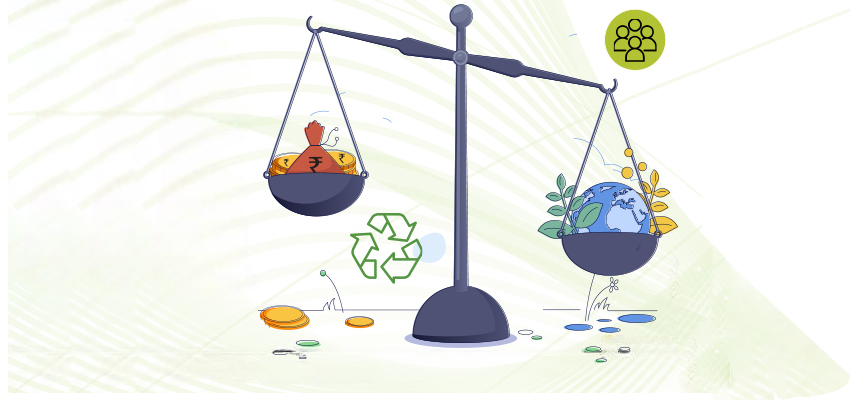
A distinguished academic and internationally known expert in development economics, Prof. Amitabh Kundu, analysed contemporary issues of critical concern that connect all of us. He has served as professor of economics and also the Dean of the School of Social Sciences, at Jawaharlal Nehru University (JNU), New Delhi. He has authored over 35 books and 300 research articles.
In an exclusive interview with Corporate Citizen, Prof. Kundu takes us through his career journey and various aspects of the Indian economy
Corporate Citizen: Can AI significantly contribute to poverty and exacerbate existing inequalities?
Prof. Amitabh Kundu: The CEO of OpenAI, Sam Altman recently made a striking observation about the future, saying, “My kid is never gonna grow up being smarter than AI.” But, the fear that AI will really replace the skilled labour force, will not happen in next couple of decades.

Artificial intelligence will increase disparity. British economist, John Maynard Keynes, had predicted in 1930, “My grandchildren would not work for more than eight hours a week”. That was his prediction, because he said technology is fast-changing. Had he seen AI, he would have said that three hours of work per week is good enough. There were about twelve Nobel laureates, who were assigned the task to find out how Keynes went wrong. Because, the labour statistics, which is generated globally, indicate that the hours of work have not gone down. Keynes’ grandchildren were interviewed and one of his granddaughters was asked, how many hours she works, and she said that as a banker, she works for at least 12 hours every working day.
One interesting point that has come up related to employment in the volume of the Nobel laureates is, many people work because they love to work. Once you start enjoying your work, AI can facilitate it. If that happens, the drudgery will be gone and the hours of work will be less relevant. Whether you work for 8 or 12 hours doesn’t matter anymore, as it will be part of your enjoyment, part of your life. If work becomes pleasure and you start deriving satisfaction from work, not out of the remuneration, then this digital divide problem would not exist.
CC: Recent statistics indicate that youth employment stands at 16% in India and among fresh graduates, it is 41 per cent.
The data is slightly dated, but in the beginning of the present decade, the situation indeed was very alarming. In India, unemployment largely is a matter of affordability. Among the poor people and the illiterates, unemployment would be very low, because if they don’t work, they won’t survive. Children from well-off families can afford to sit at their parental house and wait for a proper job. So, I can well understand, why among the young graduates in upper and so-called middle class, unemployment rate is very high. But, these are largely frictional unemployment. A large part of this 41% unemployment among fresh graduates—they would be unemployed for six months or so. Unemployment rate of just 5% in the lowest income category is a matter of much serious worry than 10-15% in the higher income categories.
Unemployment rate is an issue, but after 2020, the rate of growth of Indian economy and of employment, has picked up. There was a sharp fall in GDP in the year 2020, due to Covid pandemic. Importantly, the growth rate after 2020 has not been highly capital intensive. Employment rate has gone up. Correspondingly, the unemployment rate has been going down during 2020 to 2025. The latest data brings that out clearly. However, creating decent and productive jobs at the middle level, for the large masses of youth in small towns and rural areas, should be the thrust in our employment policy. At the top level, there are fictional problems, due to short time demand supply rigidities, but these are getting sorted out.
CC: The GDP growth is slowing down at present and on the other side, it is said that Indian economy is resilient, driven by demographic dividend and middle class wealth. How true is that?
We should not be worried about the quarterly fluctuations in GDP growth. On the whole, the strength of the economy has certainly improved. Asian Development Bank has predicted that the 21st century belongs to Asia, and India is going to be one of the leading countries. So, in the longterm perspective, Indian economic growth rate would be somewhere between 6-7%, in the coming decades. I think, it’s a bit ambitious to say that by 2047, India will have per capita income of $15,000 per annum. To become a developed economy, India’s per capita GDP must go up from $2500, as it is now, to $15,000. That seems to be ambitious. Nonetheless, the growth rate will be reasonably high. The global growth rate is less than 3%, while India’s growth rate is varying between 5-6 per cent.
CC: In 1991, when the then PM Manmohan Singh brought in reforms, we entered into a rising growth phase. Are we now again going through a new phase of high growth?
If you look at the total GDP figures, you see riding curve. But up to 1990, the slope of the curve or the angle was low. The slope shows the growth rate at all points of the curve. In 1990, there is breakpoint. The growth rate picks up and it continues till 2019, and then there is a drop reflecting the impact of the Covid. But, after that, the slope becomes sharper. If you take the yearly growth rate at present, I don’t think you have any reason to worry about, at that front. The growth rate after 2020 has been slightly high, but if it is resulting in sharper inequality, that would be a matter of concern, which the government must keep in mind.
If you are not able to generate employment at the middle level, in small and medium towns, in rural areas, inequality would be sharper. The annual Human Development Report (HDR), coming from United Nations Development Programme (UNDP), points out that India can be a leading country in the world, provided it addresses the problems of inequality. And, inequality not only in income, HDR shows that Indian inequality in access to education, is one of the sharpest in the world—that’s a matter of anxiety. We have to address the problems of inequality in the distribution of wellbeing.
"We have to restrict our emissions. We have to follow the sustainable development strategy and build resilience. But, the responsibility has to be differentiated across the globe, based on the capability"
— Amitabh Kundu
CC: India is home to a significant population living below poverty line, and the gap between the poor and rich is very wide. Does this present a challenge to social cohesion and inclusive growth?

I agree that economic disparity gets reflected in social inequality. There is a culture of poverty, which constrains progress of people in the lower sections. However, in spite of significant increase in inequality, absolute poverty has declined, reflected in say the people who did not have two square meals a day—you only need an ultra-radical person to say that hunger has gone up in India. India has been sufficient in food grains from 1985 onwards. So, absolute poverty measured in terms of two square meals a day or minimum level of calorie intake, certainly has gone down, but it is not zero.
There are many who are claiming, based on the latest data on consumption expenditure coming from National Sample Survey, that poverty is now below 3%—I have a feeling that’s a gross under estimation. There are methodical issues. I have argued that the purchasing power, which will enable you to buy the minimum survival basket, along with the basic minimum necessities of health and education, is the poverty line. And then, poverty would not be as low as 3%. I would place it at 14-15%, which is roughly the same as brought out by multidimensional poverty. A country which is entering the ‘developed category’ in another 15-20 years, still has 15% people below poverty line, not having basic nutrition and education, should be considered as alarming.
CC: India is projected to have become the most populous country in the year 2023. How is this shaping the development dynamics?
Look how the narrative has suddenly changed. Just before five years, we were told to control population explosion, otherwise benefits of development is not reaching the people. And, now we hear people saying that the majority community must increase its fertility rate (births per woman) from 2 to 3, or else, the socio-political balance in the country will be disturbed and there will be dearth of youth to take care of the elderly.
It is indeed true that we have made tremendous progress in reducing our fertility. Our total fertility rate was near 4 in the 70s. Now it has gone down to 1.8—instead of celebrating it, we are ringing the alarm bells. Despite the below replacement fertility, India’s population will continue to rise in the next 15-20 years, because of the momentum factor. The percentage of couple who are in the reproductive age group is very large and that’s why up to 2045, Indian population will continue to rise. After 2050, it may start coming down, and that I don’t think is a reason to worry.
We will have labour force available, because women workforce participation is very low in India. They have to be shifted to the modern sectors. There are people who are in the unorganised sector, in household based activities, and unpaid family labour. They need to be released from low productive activities—they will come to the formal labour market. So, the worry that there will be a general shortage of labour to take India forward to Viksit Bharat, with a high rate of economic growth, is misplaced. It is too early to panic about the sharp decline in the fertility rate.
"Today, when I am at the age of 75, I shine more in the reflected glory, of not my own work but those of my students"
A LIFE IN WORK—MY CAREER JOURNEY
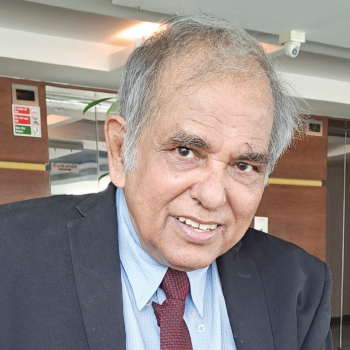
I come from a small town, Chhindwara, in Madhya Pradesh. My ambition in life was constrained by circumstances. I wanted to get into teaching—hoping to get a lecturer’s job in a degree college or if possible, in a local university. I completed my Master’s degree in economics at an affiliated college in my hometown, as I could not afford the cost of studying at a university. I qualified for a research fellowship at the Gokhale Institute of Politics and Economics, Pune, where I interacted with my fellow students, graduating from premiere Indian universities. I realised that my deficits were not so much in the knowledge, in subject areas, as in my articulation and presentation. Unfortunately, due to local-nonlocal politics, many students left the institute in the late sixties.
I corresponded with Professor Amartya Sen in Delhi School of Economics, who offered me a fellowship and part time teaching assignment at the Post Graduate Study Centre of Delhi University. He was my supervisor for a year, but when he shifted to London School of Economics, I was lucky to be selected as an Assistant Professor at JNU. The missed opportunity of working with Prof. Sen was, to some extent, compensated by my interactions with stalwarts in various disciplines in JNU, at an early stage of my career. Here, I was allowed to do my PhD along with my teaching. I worked on a topic in Welfare Economics — how do you measure development? How do you measure wellbeing of the people? My doctoral work was on “Measurement of Spatial Deprivation and Regionalisation”. That is how I started my career, working in the interface of theoretical and empirical research, with Professor Moonis Raza as a friend, philosopher and guide. I dedicated this work to the interface of economics with geography, wherein the former has the smell of the earth and the latter transcends the particular.
I kept contact with Prof. Sen even after my PhD. I obtained a Fulbright fellowship to do post-doctoral work at the University of Pennsylvania (Penn), where I interacted with Professor Walter Isard, the father of Regional Economics in the USA. There, I was offered lectureship, but I didn’t want to stay back—I was already an Assistant Professor in JNU
During my stay at Penn, I wrote a paper, critiquing the poverty indices, including that proposed by Prof. Sen, in an axiomatic framework, which was published in International Journal of Economics. Prof. Sen was happy that I carried forward the work I had started with him, culminating into proposing an ‘Impossibility Theorem for Measuring Poverty’, which was republished as a part of ‘The International Library of Critical Writings in Economics’. He quoted the paper in several of his writings as an “important contribution”, but qualified by saying “Amitabh is very demanding, in terms of axioms”.
I have no hesitation in admitting that every single word in the Impossibility theorem paper was written by Tony Smith, Professor of Mathematical Economics at Penn. I had sent my original piece to the journal, which promptly returned it with the suggestion to put the arguments in a set theoretic framework and generalise the results. Tony was enormously pleased with the piece. When he rewrote the paper for me, I could not recognise it. He firmly refused my pleadings to be the first author arguing that he merely translated it from English to mathematics, and generalised the results. That was the best example of academic modesty, I have ever seen in my life.
While teaching at JNU, I groomed a large number of students who got into civil services, corporate sector, while a few started civil society organisations or joined politics as a profession. Today, when I am at the age of 75, I shine more in the reflected glory, of not my own work, but those of my students.
"The unemployment rate has been going down during 2020 to 2025. However, creating decent and productive jobs at the middle level, for the large masses of youth in small towns and rural areas, should be the thrust in our employment policy"
CC: With reference to the SDGs by UN that we have to reach by 2030, what are the key challenges India is facing?
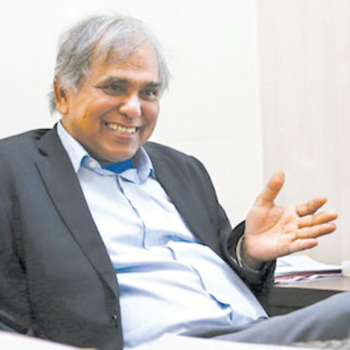
In many of the dimensions, we have already reached the target such as hunger. In case of poverty, there has been a very sharp decline. Even if you take it as 15% and not 3%, as was computed in a study by the State Bank of India, this reflects a decline from 25% to 15% within five years. But, there are issues, for example in housing. I must say that housing-for-all did not reach the poorest of the poor. Targeting has been a problem in many other programmes as well. The subsidies have often not gone to the targeted population. Certainly, that gives a much lower rate of social return, if the governments pumping of money doesn’t get targeted.
CC: The connection between poverty and climate change—climate change is pushing many people into poverty.
The United Nations Environment Programme (UNEP) says that climate change is not the factor that affects all sections uniformly. They have mapped the vulnerable areas. The coastal areas, some of the hilly areas, are likely to be affected much more. The sea water level would go up— many of the island countries are going to be affected. There are other serious issues. The spell of heatwave last year was severe and spatially diverse, and this was attributed to climate change. Heatwave doesn’t affect rich and poor equally. For those who work in air-conditioned rooms, heatwave doesn’t mean much, while it is serious for those who are working on the street. The stress of heatwave depends on the conditions of living and that of work. Climate change will affect the less developed countries grievously, particularly the vulnerable and poorer sections of the population.
CC: Striking a balance between economic growth and environmental preservation is an intricate endeavour. How should we tackle this issue to strike a right balance?
There is one way of tackling, which was proposed at a global conference I attended. It was argued that the developing countries like India should get exemption from the sanctions, even if it doesn’t fulfil its commitments of SDGs. India should have some leeway, some relaxation, because it has to address the other targets of SDGs – meeting the deprivations in health, education, housing, water supply and sanitation. Suddenly, a proposal came from a UN body at the Conference that the rich in India should be taxed in the same manner as the rich in New York, Frankfurt or Canberra. India is certainly having much lower level of per capita income, but it is producing billionaires at a rate much faster than that of poverty reduction. Why should the billionaires in India get an exemption? This means that the tax rate should be the same for exerting the same level of environment pressure for the rich in Germany, Australia and India. That’s, however, a very difficult preposition to accept operationally. This would mean that we are allowing Indian taxation and fiscal policy to be determined by global institutions. It is an issue to be resolved within the country and makes a case for a more progressive environment linked taxation policy by the Indian Government.
India should realise that it cannot take the period of relaxation from the global authorities for a very long time and encourage the present pattern of growth, which is accentuating inequality. We have to bring down the inequality. Wealth inequality, as reported in the World Economic Forum, is very high. We must design strategies to address the problems of inequality domestically.
In the context of per capita CO2 emission in India, being less than two tonnes in a year, against over 15 tonnes for the US, it is unacceptable that the developed countries would say that our lifestyle is non-negotiable at a global platform. Similarly, for India to say, we will not have any restrictions on our emissions, till we get to per capita emission of 5 tonnes, which is the global average, would be questionable. India having 5 tonnes of per capita emission would mean significant increase in global environmental pressure due to its population weight.
We have to restrict our emissions. We have to follow the sustainable development strategy and build resilience. But, the responsibility has to be differentiated across the globe, based on the capability. The developed countries have greater responsibility in showing greater restrain and cooperation in transfer of technology to the developing world.
ESG EXCLUSIVE: UMAKANT DASH
Equity in Rural Development
Effective management of India's rural resources requires a multifaceted approach that addresses key challenges and opportunities. Uplifting the rural sector and empowering the rural masses, was the vision on which the Institute of Rural Management Anand (IRMA) was created. IRMA has been converted into theTribhuvan Sahkari University (TSU), as an Institution of National Importance (INI), on 6 April, 2025.
Umakant Dash, Director, TSU, is constantly working towards TSU’s vision of promoting and building sustainable, ecologically friendly, and equitable socio-economic development of rural people through forward-thinking professional management. He talks to Corporate Citizen, on TSU’s success, using technology in rural areas, importance of cooperatives and much more
By Rajesh Rao
Corporate Citizen: Tell us about your academic and career journey till now.
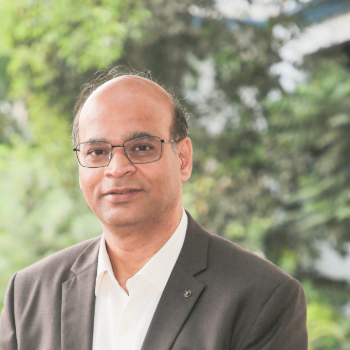
Umakant Dash : I earned my PhD in Economics from IIT Kanpur in 1996 and began my academic career at BITS Pilani as a Lecturer in Economics. Those formative years deeply influenced my teaching philosophy. At BITS, I imbibed the values of treating teaching not merely as a profession but as a passion, inspired by the senior faculty and the institution’s unique culture.
In 2004, I joined the IIT Madras, as a Professor in the Department of Humanities and Social Sciences—IIT Madras provided an enriching academic environment, not just through interactions with outstanding students, but also through engagements with the corporate sector and government. It was here that my interest in public health and rural development took a more structured form. I also had the opportunity to serve as the Head of the Department for an extended term of four years and as an Adjunct Professor at IIM Tiruchirappalli. These roles allowed me to integrate my interests in management and development, which eventually led to my appointment as Director of IRMA, a position I have held for the past four years.
CC: How do you blend development studies with that of management practices? And, it is said that IRMA (now TSU) does it better.
IRMA’s core mission is to professionalise institutions working in and for rural India. Development here is not just about economic growth—it involves equity, inclusion and sustainability. Management, on the other hand, is about the practical tools and systems that enable efficient and effective outcomes. While disciplines like economics, sociology and anthropology, offer theoretical lenses to understand development, we focus on translating those ideas into practice.
IRMA brings these two domains together— development as theory, and management as execution. Our graduates are trained not only to understand the structural issues of rural society, but also to apply management principles to solve real-world problems in a professional and ethical manner.
CC: Is there a difference between a B-school, MBA, and the management you teach at IRMA?
Absolutely. While our Postgraduate Diploma in Rural Management shares structural similarities with mainstream MBA programmes, what sets it apart is the perspective. Our focus is on rural communities—farmers, households and grassroots institutions. We don’t just teach management; we contextualise it. Our students undergo a two-month Village Fieldwork Segment (VFS) after their first term. This immersive experience transforms their worldview. They begin to understand the rural ecosystem, and when they return to the classroom, they apply this understanding to functional areas like finance, marketing, operations and strategy.
CC: Are these students coming from urban areas and how do you train them to understand the dynamics of the rural economy?
Around 70–75% of our students come from urban backgrounds. Their two-month stay in rural areas—living with and learning from local communities—changes their perspective. They develop empathy, not sympathy. At IRMA, we often say: “We are an institute with a heart.” Our aim is to cultivate humanistic managers who can engage meaningfully with rural realities.
This transformation is also supported by a curriculum that begins with strong social science foundations—covering institutions, religion, society and development theories. Exposure leads to understanding, and understanding fosters empathy. Over time, this mindset becomes embedded in our students. The only thing we always say is that IRMA (now TSU) is an institute with a heart, be empathetic not sympathetic, nobody wants to be sympathised.
CC: How do you teach empathy as a part of the curriculum?
The first term of the prorgamme is heavily loaded with the social sciences courses, after which the students spend two months in the village environment, unlike other mainstream B-schools. In the social sciences courses, we talk more about the society, religion, institutions, the development theories etc. Exposure is given to them through these social science courses and when they go and stay in these villages, they pick up the intricacies of empathy. It is a natural process and over the years it so happens that the mind is welded in the campus. When the students come to IRMA, they know what they are coming for and are mentally prepared, adapting to the new situation and environment.
"Cooperatives are economic entities with a social soul. Unlike coperates, they blend economic objectives with community welfare"
— Umakant Dash
CC: How is AI and technology helping to reach out to these rural areas?

Technology plays a crucial role in driving rural development by improving various aspects of life, including agriculture, education, healthcare and economic opportunities. It can bridge the gap between urban and rural areas, making access to services, markets and information, more accessible. Technology is a powerful enabler. It enhances productivity in agriculture, improves access to healthcare and education, and facilitates economic opportunities. Our students are trained to use and transfer such technology to rural communities.
In recent fieldwork, students used satellite mapping and GIS tools to help villagers identify and document their land parcels. They introduced digital mapping techniques and internet-based information platforms. Many rural residents primarily use phones for basic communication, but we help them explore its broader potential for education, enterprise and empowerment.
CC: How important it is for the effective management of the rural resources? Is the rural market still under-tapped and does it require a different approach?
Yes, the rural market is vast and still underleveraged. Effective management of rural resources—natural, institutional and human—is critical. Institutions like Panchayati Raj bodies, self-help groups, cooperatives and microfinance institutions, play key roles in decentralised governance and development. These grassroots entities require professional management for effective functioning.
Take the Gram Panchayat Development Plan (GPDP) for instance—it’s a comprehensive roadmap for village development. Managing this involves skills in budgeting, monitoring, prioritisation, and stakeholder engagement—all of which are part of rural management education.
Even large FMCG companies now recognise that the next wave of growth lies in rural India. Rural consumer behaviour is different—it’s more price-sensitive and driven by trust and loyalty. Our programme teaches marketing from this unique lens, preparing our students to address this distinct and growing market. The value that the rural consumers expect from a product is different from the value that those in the urban areas. They are very price sensitive, but at the same time they are extremely loyal.
CC: There are many cooperatives, which are operational in the rural areas as well. As rural people tend to have more faith in cooperatives, how do we make the cooperatives competitive with other corporates?
Cooperatives are economic entities with a social soul. Unlike corporates, they blend economic objectives with community welfare. However, they must also adopt sound business practices. Governance is the key differentiator between cooperatives and corporates.
To enhance their competitiveness, cooperatives must focus on transparency, democratic processes and regulatory compliance. Elections must be regular and fair; rules must be followed. When political interference dilutes governance, cooperatives fail to realise their potential.
Amul and the Gujarat Cooperative Milk Marketing Federation (GCMMF) are shining examples of cooperatives functioning at par—or even better—than corporates in several respects. These success stories underscore that with the right leadership and systems, cooperatives can be both, socially impactful and economically robust.
ESG EXCLUSIVE : P. CHANDRA SHEKARA
From Plough to Profit
The mindset that agriculture is just a culture of the land should be changed to agribusiness, to inspire farmers to come together and make it a profitable business, believes P. Chandra Shekara, Director General of Centre on Integrated Rural Development for Asia and the Pacific (CIRDAP)
By Vinita Deshmukh
Corporate Citizen: Tell us about your recent Bangladesh posting.
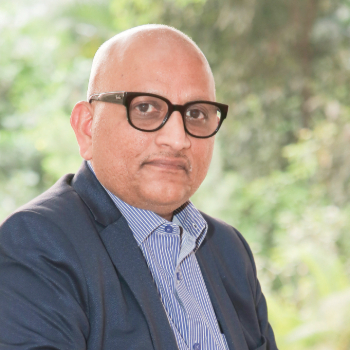
P. Chandra Shekara: CIRDAP is an intergovernmental organisation formed in 1979 by the Food and Agriculture Organisation (FAO) of the United Nations to address rural development in the region. Starting with six countries, it now has 15 member countries including India, Pakistan, Nepal, Sri Lanka, Bangladesh, Vietnam, Thailand and others. Afghanistan was initially a member, but is currently diplomatically de-linked.
CIRDAP focuses on integrated rural development, through research, training, model development, and knowledge sharing among member nations. A significant recent milestone is the UN General Assembly's declaration of 6th July—CIRDAP’s founding day—as World Rural Development Day, in recognition of our regional impact.
I am the second Indian to lead the organisation. My selection was confirmed during a member vote held in Bangkok in July last year. CIRDAP is headquartered in Dhaka, and our governance structure includes a Governing Board, Executive Committee and Technical Committee, comprising officials and experts from all 15 countries.
CC: What are your priority-wise issues that you are handling now?
Rural development is a very broad area. The priority is not on picking the beautiful star from the sky, rather all stars are important. To begin with, I started focusing on the Sustainable Development Goals (SDGs), which are 17 in number, which include poverty, literacy, health, agriculture, climate change, employment, skill development and entrepreneurship development.
I am a doctorate in agriculture, and I have worked in the Agriculture Ministry of India for 35 years, in various capacities. So, I know that unless agriculture becomes profitable, things will not change. If agriculture becomes profitable, people will not migrate to other places, and they will stay back. The rural youth is educated, they can bring technology to agriculture and make it more profitable. They will innovate many things, and make agriculture more glamorous and attractive.
CC: What do you think is the state of agriculture now, with a lot of corporates starting agritech ventures?
In the Indian context, earlier, the corporates were more interested in non-agricultural activities. For them, manufacturing of tyres and automobiles, including information technology, service sector, tourism, construction and education, was more attractive. Because, to a certain extent, these sectors are protected by maximum risks and ups and downs. But, agriculture is controlled by market, monsoons, the village atmosphere, and they have to deal with a large number of small land holding farmers. So, they never wanted to take risk. But, in recent trends corporate sector is showing interest in agriculture, because agriculture requires seeds every season, and seed is a big business. So, large number of corporates have got into the seed sector.
Next, agriculture requires fertilisers and this is a lucrative business, thus attracting corporates. They are also into mechanisation, processing, logistics, retailing, marketing and storage. Lately, they are showing keen interest in working with farmer producer companies. It is a cooperative type, which involves 500 to 1000 farmers. They come together, register as a company, and all the rules and regulations applicable to a company, are applicable to the farmer producer company.
Suppose, if you want to export 1000 tons of any grain, you can’t get that from a single farmer. There will be quality issues, price issues, negotiation issues, logistics and much more. But, if you deal with a cluster of farmers, it’s easy to procure, easy to dictate quality, easy to negotiate, and easy to commit to the other side. So, it makes the corporate job easy to handle their businesses.
CC: Reverse migration can only happen if a farmer is empowered in his own village too. Are you working towards that?
Yes, definitely. We are trying to attract and retain youth in agriculture by creating white collar and skilled jobs for young, qualified people in agriculture. Therefore, now IIT and IIM graduates and well qualified people who have returned from abroad, are into agri-startups.
"The rural youth is educated, they can bring technology to agriculture and make it more profitable. They will innovate many things, and make agriculture more glamorous and attractive "
— P. Chandra Shekara
CC: What are your thoughts on Minimum Support Price (MSP) and the rift between the government vis-à-vis with the farmers?
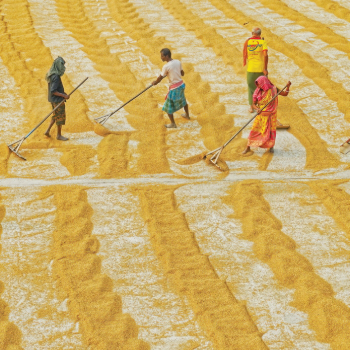
In my view, why should there be a minimum support price; why not a maximum support price? Minimum is a mental block actually. So, if there are two places, and whichever is the best place to sell, then they should have the opportunity to sell there. But, I cannot say there is only one place and that dictates the prices, because then farmers lose the freedom to sell in the open market and make maximum profit. Therefore, liberalisation has to take place in agriculture.
CC: Then why are the farmers fighting for MSP?
The farmers are fighting for MSP because they are not even getting the minimum. And, why they are not getting profit is because maybe 50 to 60% of the profit goes to middlemen. Whether he is a local trader or a wholesale dealer, or a retailer or an exporter, money is going to these people and not to the farmer. The moment farmers come into group and start dealing with processing and marketing activities by themselves, the 50 to 60% profit which is going to the middleman, goes to the farmer. And, that is where, minimum support price will become maximum support price. Profit will get doubled. The only thing is, they have to empower themselves. Nowadays, information technology apps are there and logistics is getting better.
CC: Will AI play any role in agriculture?
Absolutely-AI plays a crucial role in agriculture, as farmers face numerous challenges and uncertainties at every stage. From the moment a seed is purchased, there's doubt about whether it is authentic or counterfeit. After sowing, there’s uncertainty about whether it will germinate. Questions arise around the use of fertilisers—whether to apply them, how much to use, and when. Irrigation decisions are equally complexshould it be done? How much water is needed, and at what time? Even during postharvest stages, there are concerns about, what to process, what not to, how to process it, and where to find the appropriate technology? AI can help provide accurate and timely solutions to all these issues.
CC: Are you also a farmer by hobby?
I’m farmer by birth. My parents were farmers. I come from Kenchikoppa village in Karnataka. Born in a farmers’ family in the village, I did my BSc Agriculture, MSc Agriculture, Doctorate in Agriculture, and also worked in the agriculture ministry. I headed two national institutes and now I am heading an international institute. So throughout my journey, I got the great privilege of serving the farmers.
CC: What’s your advice to youngsters who want to take up profession in the agricultural field?
Be enterprising-that’s very important. A casual approach will not work in agriculture. I will sow something, it will come, and we will harvest-no, it doesn’t work like that. What to sow, when to sow, how to sow, package of practices, where to sell-it has to be transformed from agriculture to agribusiness. Now it’s called culture, but I want it to be business. The business should be our culture, only then people will start seeing money in agriculture.
ESG EXCLUSIVE: KRISHAN BIR CHAUDHARY
Agri-Industry Synergy
Agriculture and industry must advance hand in hand, like two wheels of the same cart, says Krishan Bir Chaudhary, a member of the Prime Minister’s HighPowered Committee on MSP and Agricultural Reforms, GoI. He is also the President of Bharatiya Krishak Samaj. Read on for his views on how to make rural economy prosper
By Vinita Deshmukh
Corporate Citizen: How did your career journey begin?
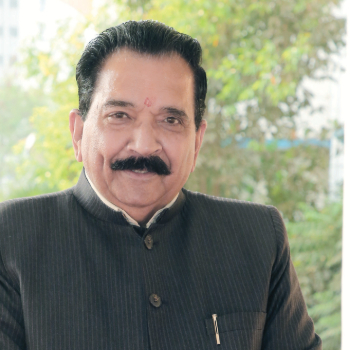
Krishan Bir Chaudhary: I come from a family which is deeply rooted in agriculture—my father was a prominent farmers’ leader, and I naturally followed in his footsteps. My journey began by actively engaging with farmers' issues, ranging from marketing challenges and dairy-related concerns to broader community needs. Over time, I took on a more proactive role in addressing these challenges.
I own an agricultural land near Noida and manage a bull station and animal breeding centre in Simbhaoli, located in Hapur district, Uttar Pradesh. Our centre houses a diverse range of Indian cattle breeds, including Tharparkar, Sahiwal, Gir, Murrah, Nagori, and Rathi, alongside Jersey and Holstein Friesian breeds renowned for their quality.
Many of our bulls have earned accolades such as the "Best of the Show" award from the National Dairy Research Institute (NDRI), at various livestock events held in Punjab and Haryana. In addition, our horses have also received the "Best of Horse Show" award from the Government of India, at an event in Muzaffarnagar.
CC: How did you become a farmers’ leader, and what inspired you to take up agriculture?
In 1984, I began actively addressing the issues faced by farmers. By 1987, a significant farmers’ movement had emerged from western Uttar Pradesh and reached the national stage in Delhi. At the time, the Bharatiya Kisan Union was formed under a joint leadership, and my father was one of its key founding leaders.
However, as time passed, internal conflicts and personal interests began to surface within the organisation. These challenges led me to step away from it.
Determined to continue advocating for farmers, I turned to politics. I firmly believed that without struggle and a strong voice, farmers’ concerns would never be addressed effectively. I contested in farmers’ elections and made it clear to everyone who approached us for support "If you stand with us on farmers’ issues, we will stand with you". Our commitment was transparent and principled.
In 1991, when P.V. Narasimha Rao became the Prime Minister of India, he held a meeting with his core advisors to discuss the need to promote leadership among farmers. During this informal discussion, my name was recommended for the Chairmanship of the proposed Ganna Kisan Board of India. I agreed to take on the responsibility when approached.
After my appointment, my first visit was to Maharashtra, home to the renowned Vasantdada Sugar Institute, in Manjari near Pune. I was familiar with the institute’s pioneering work in sugarcane research, byproducts, mechanisation, and computerisation. I then visited several sugar factories in Ahilyanagar, Satara, Sangli and Kolhapur, along with cooperative markets and dairies, including the impressive Warna Dairy and Warna Market. The focus of Kopargaon in Ahilyanagar, of producing sugarcane by-products for the pharmaceutical industry especially stood out.
Inspired by these visits, I convened a board meeting and proposed several key reforms - computerisation of the sugarcane supply chain, direct bank payments to farmers to eliminate corruption especially prevalent in Uttar Pradesh, and fair-price sugar distribution to farmers' families.
CC: Tell us about your ethanol blending in fuel campaign.
I strongly advocated ethanol blending in fuel to solve the surplus sugarcane issue. Though many found the idea far-fetched in 1992, I cited Brazil’s success in blending 20% ethanol. Unfortunately, the powerful liquor lobby, which had overlapping interests with the sugar industry, opposed it.
When progress stalled, I wrote a detailed twopage letter to the then Prime Minister Atal Bihari Vajpayee, in 1997. He forwarded it to the Ministry of Food and Civil Supplies. In response, I received a letter acknowledging my proposals and stating that a committee under the Petroleum Secretary had been formed to study ethanol blending.
I then, emphasised successful trials at the Petroleum Institute in Dehradun that showed 12% blending was viable in two-wheelers. PM Vajpayee agreed to start with 5%, leading to India’s first ethanol blending policy—an initiative he launched based on our efforts.
CC: You were also the Chairman of State Farms Corporation of India…
In 1995, I was unexpectedly appointed Chairman of State Farms Corporation of India, a corporation facing heavy losses. The then Agriculture Minister, Balram Jakhar, had recommended my name without informing me. I accepted the role and was tasked with reviving the organisation within a year. My work was later recognised by the Indian Development Commission for turning around this loss-making entity.
CC: What was the work of the State Farms Corporation of India?
This is the largest seed-producing corporation in Asia, with the largest landholding. If the crop is good, the nation prospers. The National Seed Corporation has done a lot for farmers because seed is the first step in improving productivity. Better the quality of the seed, better the crop we will get.
CC: There’s a serious issue with the quality of cotton seeds in Maharashtra. Why is that happening?
You're absolutely right—the quality of cotton seeds is a major concern, and the farmers are being deceived. Seed companies are exploiting them by charging exorbitant prices, while providing substandard seeds. This is nothing short of a betrayal, especially when it targets small and marginal farmers who make up around 86% of India’s farming community. These farmers typically own less than two acres of land, and for them, every seed matters.
That’s why, in the Minimum Support Price (MSP) committee formed under the chairmanship of PM Narendra Modi, there’s a clear emphasis on protecting the interests of small and marginal farmers. The goal is to ensure that they receive fair value for their produce through a transparent system. But, how do we ensure that? That’s the core question.
"The Covid pandemic proved one thing clearly—India remains a food-secure nation, and agriculture is still the backbone of our economy"
— Krishan Bir Chaudhary
CC: What more is the government doing ?
The government has formed a committee that is conducting a comprehensive study— reviewing our entire agricultural system since independence, as well as analysing international models. They’re studying how countries like the United States, Australia, Brazil, China, Japan and European nations, support their farmers through pricing, subsidies and infrastructure. We must learn from global best practices and adapt what suits India.
However, there’s a disturbing notion that farmers are “unskilled”. That’s an insult to those who feed 1.4 billion people daily. During the Covid-19 lockdowns, when flights, trains and buses came to a standstill, it was Indian farmers who sustained the country. While even developed nations faced food insecurity, our farmers delivered vegetables, grains, milk, fruits, and pulses across the nation.
The Covid pandemic proved one thing clearly—India remains a food-secure nation, and agriculture is still the backbone of our economy. A country that is food-secure is, by extension, economically resilient, and for that we owe immense gratitude to our farmers.
CC: So, how did you join the government’s MSP committee?
During the Covid pandemic, the farmers' protest was allegedly heavily influenced by anti-national elements linked to the Deep State. I openly spoke against it on major news channels often appearing for 5–6 hours daily. I consistently explained that the movement was misguided. I highlighted how market monopolies have long exploited farmers by denying them direct access. I advocated for breaking these monopolies to create open markets with more buyers—only then can farmers receive fair prices. My consistent stance led to my inclusion in the MSP committee.
CC: How are you going to take this up?
Eighty-six per cent of India’s farmers are small or marginal. They don’t protest, don’t come to Delhi—they quietly rely on the committee to solve their problems. These farmers have no real access to a fair market. They are pushed into systems dominated by commission agents who dictate prices through rigged auctions.
Mandis are controlled by state governments, and licensing is governed by state laws. So, whatever policy is made nationally must be implemented locally. But in my view, we must break the monopoly of these markets. The system should be open—anyone should be able to buy or sell, but no one should be allowed to buy below the MSP. Auctions must start at MSP for good-quality crops. Of course, quality matters—wet, spoiled, or contaminated crops are not acceptable. But, if the quality is right there must be a mechanism to ensure farmers get MSP or better.
It’s the poor, silent farmer—the one who doesn’t protest, who has enabled the government to provide free ration to 80 crore people. No other government in the world has achieved this. This is only possible due to the tireless efforts of Indian farmers.
Some say productivity hasn’t improved, but then how are we feeding 140 crore people. In the past, the U.S., with only 28 crore people, had to rely on PL-480 wheat. Today, we are not only self-sufficient but exporting rice and improving production in pulses and oilseeds.
CC: What do you think about the many corporates who have started agritech industries, liaising with farmers from seed to market?
Opening markets should strengthen investment linkages between corporates and agriculture. When companies work directly with farmers—overseeing inputs, ensuring quality, procuring produce and managing processing—they add real value. As long as farmers sell only raw goods, they won’t benefit. But, when the agro-food industry processes their produce based on market and consumer demands, farmers earn fairer prices and avoid exploitation.
Business and agriculture must move forward together, like two wheels of the same cart. If both align—market access for farmers and processing by industry—the agricultural economy will thrive. Countries like Malaysia, Singapore and Thailand, are far ahead in agro-processing. India must catch up, and it’s up to the government and policymakers to drive this shift.
ESG EXCLUSIVE: H.P. SINGH
Redefining Agriculture
H.P. Singh, Founder and Chairman, Confederation of Horticulture Associations of India (CHAI), is transforming Indian farming with drones, digital tools and sustainable practices. He talks to Corporate Citizen about making agriculture smarter, more profitable and future-ready
By Anushree Bhoware
Corporate Citizen: What, in your view, are the most impactful innovations currently being underutilised by Indian farmers?
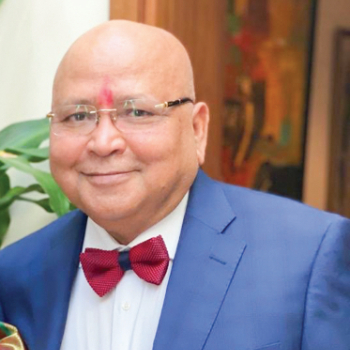
H.P. Singh: India has made commendable progress in agriculture, including horticulture, livestock and fisheries. However, agriculture must now be viewed not merely as a production activity, but as an integrated value-driven enterprise, one that encompasses production, trade and consumption. Several impactful innovations remain underutilised. For instance, the use of drone technology for precision spraying of agrochemicals and real-time crop monitoring holds immense potential. Drones enable efficient resource use, reduce human exposure to chemicals, and provide accurate insights into crop health, facilitating timely interventions.
Another critical yet underexploited domain is value chain management. A well-structured value chain, from input supply and production to processing, storage, distribution and marketing, can significantly enhance both, productivity and profitability. Integrating farmers into such value chains ensure better price realisation, reduces post-harvest losses, and improves market access.
We are also entering a new era of digital agriculture. The adoption of advanced technologies such as AI, IoT and blockchain, can revolutionise farming systems. These tools offer the ability to monitor environmental and crop conditions in real-time, enabling data-driven, climate-smart decision-making, and enhancing overall efficiency across the agri-food system.
CC: Tell us about your greatest achievements when you were actively involved in the conceptualisation of the National Horticulture Mission (NHM). And, what areas still need urgent attention?
When I took over as Horticulture Commissioner, one of my key initiatives was the conceptualisation and proposal of the NHM. The idea was to create a comprehensive framework that would address all critical components of the horticulture value chain, from production and post-harvest management to processing and market integration. This mission aimed to integrate these elements into a unified strategy to drive holistic sectoral development.
The NHM was initially launched in the North Eastern region around the year 2000. Encouraged by its success, we expanded it to the Himalayan region by the year 2003, and eventually rolled it out nationwide by the year 2005. Subsequently, all the missions were merged and now it is known as Mission for Integrated Development of Horticulture (MIDH), covering whole country. At the turn of the century, India’s horticultural production stood at about 136 million tonnes, today it has surged to over 362 million tonnes. This remarkable growth was made possible through a mission-mode approach that effectively translated technology from research stations to farmers’ fields, empowered stakeholders to adopt innovations, and built strong linkages between producers and markets.
Another major focus of the mission was the promotion of micro-irrigation technologies. These systems have proven to be highly efficient, saving up to 60% of water and 40% of nutrients. At the beginning of the initiative, micro-irrigation covered merely 500 hectares; today, it spans close to 14 million hectares across the country. This transformation has had a profound impact on wateruse efficiency and crop productivity.
However, challenges remain. As new technologies continue to emerge, there is an urgent need to scale their adoption, particularly among small and marginal farmers. Government initiatives are now increasingly aligned with these goals, and I am confident that with continued focus, we can meet the horticultural production targets required to feed a growing population and ensure nutritional security. A Mission for Integrated Development of Coconut was also started, which has impacted production and utilisation of coconut. Evidently, mission approach of development has paid a dividend.
CC: Given your leadership across both public and private sectors, what can each learn from the other to fast-track agricultural transformation?
The public and private sectors have much to learn from each other, and the synergy between them is essential for agricultural transformation. It is a two-way exchange, where the public sector can adopt outcome-oriented approaches and customer-centric innovations from the private sector, while the private sector can benefit from the scale, outreach, and regulatory frameworks of the public institutions. Let me illustrate this with a simple example. In horticulture, we often advocate for micro-irrigation systems as a means to save water and enhance efficiency. However, unless the private sector manufactures and supplies these systems at a scale, farmers cannot adopt them effectively. This highlights the necessity of collaboration among the public sector, private industry and scientific institutions.
"If India is to achieve its development targets, particularly in agriculture, it is imperative that policymakers, private enterprises and public agencies work together "
— H.P. Singh
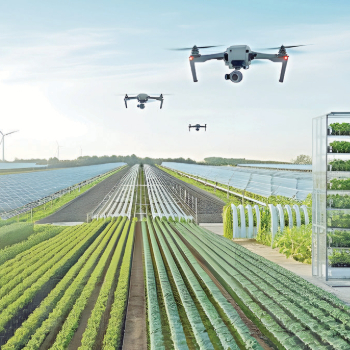
can adopt outcome-oriented approaches and customer-centric innovations from the private sector, while the private sector can benefit from the scale, outreach, and regulatory frameworks of the public institutions. Let me illustrate this with a simple example.
In horticulture, we often advocate for micro-irrigation systems as a means to save water and enhance efficiency. However, unless the private sector manufactures and supplies these systems at a scale, farmers cannot adopt them effectively.
This highlights the necessity of collaboration among the public sector, private industry and scientific institutions.
If India is to achieve its development targets, particularly in agriculture, it is imperative that policymakers, private enterprises and public agencies, work together. Without such integrated efforts, true transformation will remain out of reach.
CC: What role do you foresee for India in shaping global standards for organic farming and sustainable horticulture?
Having chaired the National Committee on Organic Farming, I can say that while India can play a significant role in shaping global standards for organic and sustainable horticulture, we must also be realistic about our domestic needs and limitations. India cannot afford to go completely organic at this stage. A balanced approach, combining organic and conventional practices, is more feasible. For example, while mangoes can be grown without synthetic fertilisers, there are currently no effective organic solutions for managing certain pests. This leads to significant yield losses, up to 30%, which drives up production costs and makes organic produce unaffordable for the average consumer.
Some farmers are exploring intermediate approaches, like using micronutrients or adopting natural and regenerative farming practices, where farm waste is recycled through composting and further reused. Additionally, the emerging bioeconomy offers promising avenues for sustainable agriculture. Overall, India is moving in the right direction, embracing innovation while balancing productivity, affordability and sustainability. This balanced model can serve as a guiding framework for global practices in organic and sustainable farming.
CC: The agriculture sector is facing a serious talent drain. How can we make farming and agriresearch aspirational careers again for the youth?
There are two critical issues to consider when addressing the talent drain from agriculture. First, agriculture is often treated as a way of life rather than as a business. Most farmers, especially those with small landholdings, are unable to achieve economies of scale. For instance, owning just five acres of land is often not economically viable. Unlike in industry, where scale is a key determinant of profitability, agriculture still lacks this essential dimension.
To make farming viable and attractive, a farmer must ideally have a minimum of ten acres to earn a decent net income of 15 to 20 lakh annually. For youth, agriculture becomes aspirational only when it is economically rewarding and supported by modern technologies. That’s where horticulture and integrated farming systems come into play, they offer higher returns and greater satisfaction. Thus, I say horticulture is intellectually satisfying, economically rewarding, and attracts educated youth to farming.
Today, we do see some educated youth returning to farming, but their continued interest depends on access to sufficient land, modern tools, and a clear business model. Without these, they are more likely to seek better-paying opportunities elsewhere.
CC: The philosophy of life you live by.
The philosophy that guides my life is—science is the soul, and service is the purpose. In agriculture, every meaningful transformation has been driven by the infusion of science and technology. I believe in science-driven service, using knowledge and innovation to uplift communities and improve lives. This commitment has shaped my journey and continues to inspire my work.
ESG EXCLUSIVE: TRILOCHAN SASTRY
From Books to Fields
Some people teach, others act, but Trilochan Sastry an IIT-Delhi, IIM-Ahmedabad and Massachusetts Institute of Technology (MIT), alumnus, does both. He left the boardroom behind to empower farmers and challenge broken systems through his NGO Centre for Collective Development (CCD) and Farmveda, a for-profit social enterprise. He helped expose political corruption and has proved that knowledge, when used right, can make democracy stronger. Read on...
By Anushree Bhoware
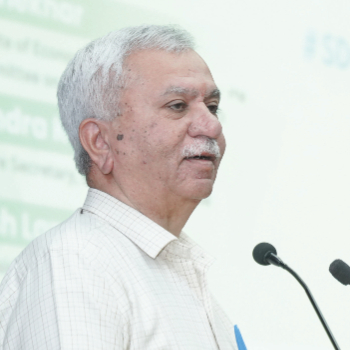
Corporate Citizen: What inspired you to start CCD and establish Farmveda?
Trilochan Sastry: The motivation really came from a desire to do something meaningful for our country on a large scale. Since farmers represent the largest group of poor people in India, we decided to work in agriculture.
CC: How can India scale models like CCD and Farmveda to empower millions of small farmers sustainably?
Honestly, it starts with your mental attitude—it’s not about capability. The mind-set should be about doing something large, scalable and long-lasting. And, it shouldn’t be for personal benefit, but for the greater good. Unfortunately, this is rare.
Many people have a small vision or they pretend to work for society, while chasing personal gains. There is often an ideological cover-up, like claims that it’s not sustainable or not profitable. However, the reality is, most people simply want to make money. That’s why they don’t pursue this path. Dr. Verghese Kurien, the architect of the country's 'white revolution,' which made India the world's largest milk producer, did it. We are trying to do it too. Some other organisations are also taking up this mission—to help many people without asking “What’s in it for me?” When people approach it that way, it works, because we are smart enough as a society.
CC: With rising concerns about transparency, what reforms do you think are most urgently needed in Indian politics today?
Political party reforms are essential. Parties need to become democratic, transparent and accountable. Right now, most are run by one person often in an undemocratic way. Until we fix the internal structure of political parties, real reforms will not happen.
"Find the genuine changemakers. Learn from them. That’s how I did it. I went into the field, met amazing people, many of whom are now my friends. I didn’t learn from books. I learned by watching real work on the ground"
— Trilochan Sastry
CC: How can young citizens become more actively engaged in political and electoral reforms?
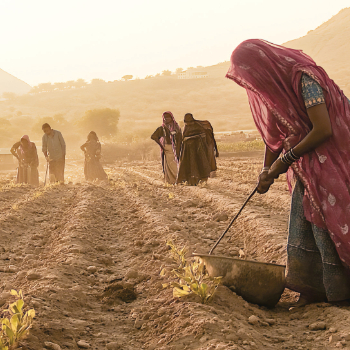
First, they must inform themselves— understand the current situation deeply. Then, they should spread that awareness. Voting is good, but not enough. Many voters are unaware of critical issues. Young people can use digital tools to study, become aware, and educate others. It’s quite doable today.
CC: These days, many issues turn into religious debates. Do you think religion is taking priority over humanity?
People need to understand their own religion properly—most operate on a superficial level, which leads to problems. We also need to understand other religions. At their core, all religions say the same thing - treat everyone well, don’t hate, don’t kill. If you miss that, it just becomes “us vs. them”, and that’s where the problem lies.
CC: What is the one insight from your latest book, The Essentials of World Religions, that you wish every reader would carry with them?
That all religions teach the same core values. Let’s just follow our own religion properly, without hating others or those who don’t follow any religion. Religion has a lot of good in it, we should accept that and not pick up negative elements. All religions essentially share the same thing - do good, be good, don’t hate anyone, and respect every belief.
CC: How should premier institutions like IIM evolve in the next decade to stay globally relevant?
They need to be continuously aware of the changes in society—technology, business models, markets and social media—all of it. They should adapt to these changes, anticipate future trends, keep themselves relevant and stay flexible. Staying relevant means addressing today’s pressing issues and preparing for tomorrow.
CC: What are your views on the impact of AI and technology on management education and research?
It’s like fire—very powerful. If used wisely, it can be immensely beneficial. But if misused, it can be destructive. It all depends on how we choose to use it.
CC: Please share some insights for young people who want to balance social work with corporate careers.
First, go out and see what truly impactful people are doing. Then, ask yourself—not “Is it good for me?”, but “Is it good for our society?” Many pretend to be doing social work while enjoying a comfortable job and salary, without real impact. Don’t fall for that.
Find the genuine changemakers. Learn from them. That’s how I did it. I went into the field, met amazing people, many of whom are now my friends. I didn’t learn from books. I learned by watching real work on the ground. For instance, I visited Shantha Sinha, former chairperson of National Commission for Protection of Child Rights, who is doing brilliant work in primary education in rural areas. I saw how she mobilised students, teachers, and government support. It made a deep impact on me. I also visited Dr. Verghese Kurien and saw first-hand how his work helped farmers escape poverty. You learn by observing real change in the field.
CC: What’s the philosophy you live by?
There’s no big philosophy—just be happy and do some good.
ESG EXCLUSIVE : HEMA NIROLA
BHUTAN: Don’t Worry; Be Happy
Hema Nirola, Chief Executive Officer of Druk Horticulture Pvt. Ltd., who has had long innings in the government offices, talks about the Gross National Happiness (GNH) of Bhutan and how her country is building a model for modern city, without compromising on sustainability
By Vinita Deshmukh
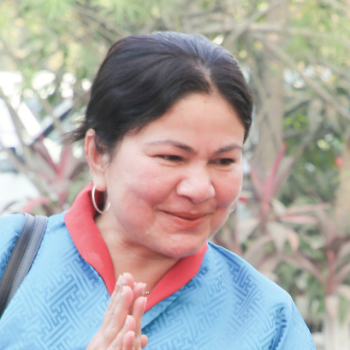
Corporate Citizen: From the government service to becoming the CEO of a private company? Tell us your journey.
Hema Nirola : I’m an agriculturist. I’ve worked with the government for almost two decades. Being a researcher as well, I thought it was time for a change, I wanted to work with a private company after so many years in government service. There was a vacancy in Druk Horticulture Pvt. Ltd., I applied, and I was selected as the CEO.
CC: How many years have you been with this company?
I’ve now been with the company for more than six years. We are into organic farming and our main focus is on tomatoes, especially seasonal tomatoes and strawberries. We sell it to local consumers, clients and hotels, and we promote ourselves on social media. We have our small community where we can reach out to each other.
CC: How many acres of land does your company have?
It is just around 10 acres of land but in future we’re planning to work with farmers by providing them inputs, consulting and educating them. We can also buy their produce as it is difficult for them to access the market. So, we plan to buy their produce and sell it in the market. Our long-term plans are to step in and help them with marketing and distribution.
We are looking to expand in nearby areas of Zhongar, and it is going to become bigger with the Gelephu Mindfulness City (GMC) initiative. GMC is a southern part of Bhutan, a flat land which is going to be developed into a model city, not just for Bhutan but for the world. Here, we can preserve our culture and heritage, while having modern facilities and technology. Tourists can come here to relax. While the airport is under construction, the city will have all the modern amenities including hospitals. We’re contributing in this initiative as agriculturists. As the city is expected to host millions of people, it is our responsibility to feed them rich organic food—that is our goal.
CC: Tell me about your childhood. How did you become an agriculturist?
I am the daughter of a farmer. My parents were illiterate, so they adopted farming for livelihood. So, agriculture is not new to me, it’s in my blood, and I’m proud of it. That’s why I chose agriculture as my career path. I enrolled in the University of Bhutan. I’ve also had the opportunity to receive training in countries like the Philippines, Singapore and Thailand, where I gained a lot of knowledge and experiences. I consider myself fortunate to have participated in various expos and events where I met lot of senior professionals and exchanged ideas. That’s how I am enriching myself as an agriculturist.
CC: Bhutan is known as the happiest country in the world. Please elaborate.
As a Bhutanese citizen, yes, I think we are the happiest people. Our Gross National Happiness (GNH) is not measured by material wealth. Maybe Bhutan is not one of the richest countries in the world, but still we are happy because our happiness is measured not by the wealth but by the culture, heritage, well-being, and access to free education and healthcare—all provided by the government. If someone is unable to get cured in Bhutan, the government sends them abroad for treatment. People in Bhutan don’t have to worry about their health and savings needed for the treatment; our government is there to take care of us. If a student is brilliant, the government supports his/her dreams, sending them abroad to pursue their desired career. Many of our doctors are trained in India, Bangladesh, Thailand and Singapore. We’re no longer an underdeveloped country; we have uplifted ourselves. We have great universities and medical colleges emerging, though the government still needs to send students abroad for some specialised courses.
CC: How does Bhutan manage both, development and nature?
If you ever come to Bhutan, you might wonder why all the buildings look the same. That’s because architectural design is standardised. Buildings must follow strict protocols; they can’t be more than four storeys high, they must include approved underground parking, and must be earthquake-resistant, as we are in a seismic zone of the Himalayan Ranges. We don’t build blindly; everything follows regulation, even hospitals.
Our hospitals may not be multi-storeyed, but they have all the necessary amenities. That’s how we balance development and sustainability because conservation is our sustainable goal. Bhutan has more than 70% of forest area, and our Constitution mandates that at least 60% of the country’s land must remain under forest cover. We follow many strict conservation laws and in parallel to it, we do other construction and development works.
"We are always grateful to India, whom we consider our "big brother" for supporting Bhutan’s financial and economic growth "
— Hema Nirola
CC: How is women empowerment in Bhutan?
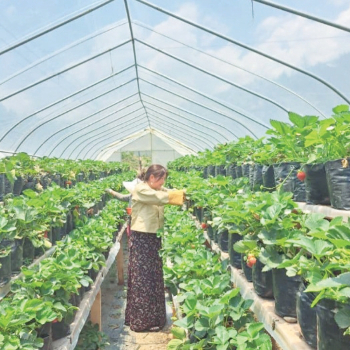
Bhutanese women are empowered. Our government does not discriminate against women. While some discrimination may exist at a smaller scale, it is not prevalent in the larger picture. Yes, there are cases of violence against women, but there are institutions in place to support women and children, which are always given top priority and protection. In general, I wouldn’t say Bhutanese women are suppressed; we’re given wings to fly.
CC: What is the family system like in Bhutan?
It is in our culture and values that we live with our parents, however, now the family structures are slowly shifting towards nuclear families. Ours is an Asian culture, where our parents are old, it is our obligation to look after them. If we cannot go to our parents’ place, we have to bring them to our homes.
We are very social people. The social events and gatherings are very important for us. For example, if a neighbour passes away, we take leave to attend the cremation and support the family. So, those sort of community feelings are strong in Bhutan.
CC: What is your view of the King of Bhutan?
The King of Bhutan is regarded as God. We respect him deeply, because whatever we are today is only because of the farsightedness of our monarchy. It has always acted selflessly for the people. We love our king.
CC: Have you ever considered having a full democracy?
We are pro-democratic. As we have a Prime Minister. People still have this right to choose their leader, but the King is always there for the country. During the Covid pandemic, the King himself was providing sufficient food to every family. He made sure that people should not suffer. When Bhutan had its first Covid case, the King personally visited the hospital to ensure proper treatment. That’s the kind of care and leadership we receive. This is Bhutanese culture.
CC: What’s your opinion about India?
We share a close and friendly relationship with India, including free trade agreements. Most Bhutanese students go to India to stay and pursue higher education. We are always grateful to India, whom we consider our "big brother" for supporting Bhutan’s financial and economic growth. Bhutan and India always share a good relationship and we’re happy to have such a supportive and understanding neighbour.
CC: Tell us about your family.
I’m married. My husband is also an agriculturist working in the private sector. We have two beautiful children: a daughter and a son. My daughter is a nurse and she has recently received a recognition certificate by the King for her contributions, which is a great honour. Such gestures by the King really encourage our youth. My son is an engineer working in an IT-based company. We’re a happy family.
CC: What’s your philosophy of life?
My personal belief is to live as if there’s no tomorrow; be happy today. If you worry too much about the future, you’ll miss out on enjoying the present. Enjoy the moment and make those around you happy. Support the sick and elderly whenever you can.
ESG EXCLUSIVE: MANISH SANGHANI
Youth-Driven Cooperatives
The cooperative movement in India is a powerful force for economic and social development, particularly in rural areas, and participation of the youth in India in the cooperative movement is very important. Manish Sanghani, Chairman of the Youth Wing, National Cooperative Union of India (NCUI) and Vice President, Bharatiya Janata Yuva Morcha Gujarat, has led the formation of two student cooperatives in Amreli, Gujarat. In tête-àtête with Corporate Citizen, he talks about the role of the youth wing in the cooperative movement, their participation, initiatives needed and more
By Rajesh Rao
Corporate Citizen: How did you get into the youth wing of NCUI and Bharatiya Janata Yuva Morcha, Gujarat, for encouraging youth participation in the cooperative movement?
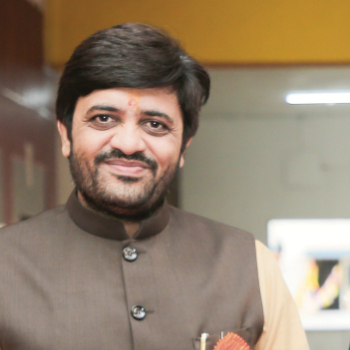
Manish Sanghani: Since I was in school, I was inclined to do something on my own and work for the people. I grew up seeing my father Dileep Sanghani, become Member of the Legislative Assembly (MLA) and then Member of Parliament (MP), and that’s how I was inspired to work for the people. I wanted to do something on my own—for the first time in 2002, I formed a charitable trust, which helped in providing food and clothing to the needy, providing financial support to underprivileged students, and also conducted cultural activities in the society. To date, we are carrying these activities under this charitable trust.
Inspired by my father’s involvement in cooperative movement, in the year 2012, I founded the Sardar Patel Cooperative Society, in Amreli, Gujarat. I myself worked hard to establish the cooperative, without my father’s help, so I could get the knowledge and experience. It took around six months to setup the cooperative and make it work. The cooperative needed at least 100 members—diligently I encouraged 100 members to form the cooperative. I started with helping and assisting these members, in obtaining their Permanent Account Number (PAN) cards. This is how my journey with cooperative movement started. I also started the Sardar Patel Group, an NGO for the betterment of the society and the world of education in Gujarat state.
CC: What crucial role can youth play in cooperatives, to bring fresh perspectives, energy and innovation?
Youth participation is a must for any country or society. The role of seniors is also important to guide and lead today's youth to become tomorrow’s leaders. Today, youth involvement is very less in the cooperatives in India, and that has to increase to ensure generational renewal. The government has urged us to spread awareness of the cooperative movement and its big role, among the students in universities and colleges. So, for the first time in the country, I founded two student’s cooperatives, in Amreli district, through our district cooperative union. These cooperatives are student-centric and a student is appointed as the chairman, to lead the cooperative. The members of these cooperatives are students, and once they finish their programme and are no more students, their membership expires.
Students in India should understand the cooperative movement's importance, because it is a powerful force for economic and social development, particularly in rural areas. If the students become part of this movement, only then can they play a leading role in the big cooperatives in the country like, Amul, Shree Mahila Griha Udyog Lijjat Papad, KRIBHCO, IFFCO and many more. Our youth wing’s role is to groom and encourage students, to get into cooperative movement.
Today, through our youth wing, we have conducted cooperative awareness seminars, at almost all the colleges and universities, across Gujarat state. Besides, the two colleges where we have student cooperative, my target is to open such cooperatives in all the colleges in Amreli district.
CC: Today's youth are tech savvy and are skilled in technology, innovation and modern management. Does the youth wing take initiatives to bring in these new skills into today’s cooperatives, which lag in technology and innovation?
Cooperative in Hindi means Sahkar, which involves mutual assistance in working towards a common goal. The cooperative movement in India is deeply intertwined with its culture— they are not just economic entities; they are also social organisations that reflect the values of community, self-help and mutual support, which are central to Indian society. I don’t think the cooperatives in India lag in technology, they are effectively implementing and utilising new technologies. The cooperative administrative offices are all using computing and most of the transactions are happening using mobilephones.
CC: India's girls are growing up in an atmosphere marked by rapid growth and greater opportunities. Are women actively involved in the youth wings of the cooperatives?
The youth wing is working on increasing the participation of women. We can encourage women to get involved with the youth wing of the cooperative movement, but we cannot force them. Those who are really interested, they are welcome. We already have 50% reservation for women in many states, for participation in governance. This is part of broader efforts to empower women and increase their representation.
"The cooperative movement in India is deeply intertwined with its culture; they are social organisations that reflect the values of community, self-help and mutual support, which are central to Indian society"
— Manish Sanghani
CC: Is the cooperative sector attractive for the youth, in terms of job opportunities, entrepreneurial opportunities and skill development?
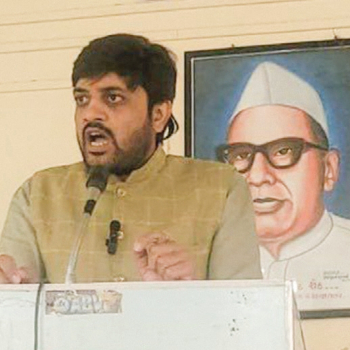
While financial security and career advancement are undoubtedly important, youth are also driven by a desire for purpose, autonomy and worklife balance. Yes, the cooperative sector can be attractive for youth in India. We need people in cooperative, who are rooted in the principles of social responsibility and want to make a positive impact on their communities—only those, who can align with the cooperative model, who value selfhelp, social responsibility and collective action.
CC: But, cooperative sector also gives opportunity for career growth and is a significant source of job creation.
The big cooperatives like, Amul, KRIBHCO, IFFCO, employ so many people. There are around 8.5 lakh small to big cooperatives in India. Cooperatives play a significant role in India's economy, contributing to various sectors and impacting rural development and financial inclusion. The Cooperative Credit Societies Act of 1904 was passed, and the Agricultural Credit Cooperative Society of Kanaginahal village in Gadag District, Karnataka, was the first society formed under this Act. This marked the beginning of the formal cooperative movement in India.
CC: There is a perception that corporate businesses as more attractive than cooperatives. What are the factors contributing to it?
Corporate businesses are generally privately owned and the gains go to the individual or investors that owns it. Whereas, cooperatives are typically owned and controlled by their members, who participate in the decision-making process, fostering a sense of community and shared ownership. Cooperatives often prioritise the needs of their members and the wider community, focusing on social and economic goals beyond profit maximisation— following a democratic model.
Cooperative is a kind of service to nation, and patriotism—I am working for everyone. Our soldiers fighting on our country’s borders does not fight because he gets a salary, he is doing it out of patriotism and love for the country.
CC: The Ministry of Cooperation is a Union ministry under the Government of India, which was formed in 2021. The ministry is responsible for providing a separate administrative, legal and policy framework. Is the ministry strengthening the cooperative movement in country?
The ministry has added three new cooperative societies - Bharatiya Beej Sahakari Samiti Limited (BBSSL), National Cooperative Organics Limited (NCOL), and National Cooperative Exports Limited (NCEL). The BBSSL is started for the cultivation, production, and distribution of improved seeds under a single brand. While NCOL is for the production, distribution, and marketing of certified and authentic organic products. And, NCEL aims to promote exports from the cooperative sector. These initiatives are part of the Ministry of Cooperation's efforts to strengthen the cooperative movement and achieve "Sahkar se Samriddhi" (Prosperity through Cooperation). The ministry is also providing free computers and software as part of its "Computerisation of PACS" scheme to strengthen Primary Agricultural Cooperative Societies (PACS).
CC: In India there are over eight lakh cooperative societies operating in over 29 sectors. However, there is no dedicated, standalone university focused solely on cooperative society management?
There has been a recent announcement from the Ministry of Cooperation, that the Government of India is setting up a national cooperative university, the bill for which has been tabled. However, there are alreadyseveral specialised institutes and universities that are offering courses and programmes in this area.
ESG EXCLUSIVE: PAWAN PAYAL
Harvest of Despair
The solution of our farmers lies not in protests, but in empowering farmers to manage their own processing, packaging and marketing. The farmer represents purity and authenticity, beyond him the market is monopolised. Pawan Payal, the National Vice President of Rashtriya Kisan Progressive Association (RKPA) gives an overview
By Vinita Deshmukh
Corporate Citizen: What is the role of RKPA?
Pawan Payal: Our primary objective is to create nationwide awareness among farmers about technology, food processing, packaging and marketing. We are currently working with around seven lakh farmers and nearly 6,500 NGOs. We have also established the Confederation of NGOs of Rural India (CNRI) as a parent NGO and are collaborating under its banner.
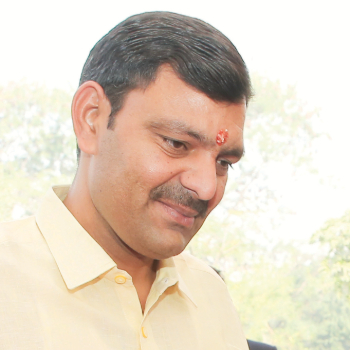
We participate in and contribute to initiatives involving NGOs across the country, providing platforms to showcase the art and talent of rural producers, including those involved in knitting, embroidery, making pickles, cosmetics, designing utensils and more. We support such farmers as best we can.
India’s economy relies heavily on agriculture, which is currently in decline. Farmers are becoming less inclined to pursue agriculture as a livelihood. The ongoing issues between farmers and the government are not being resolved effectively.
While scientists can conduct research to improve technology, implementation is the key, and that is often lacking. Similarly, government policies are being formulated, but their on-ground implementation falls short of ensuring real benefit for the farmers. When it comes to agro-food processing, farmers won’t truly see progress or improve their financial situation unless they become a part of it. It’s a key step toward solving their problems and building a better future. Our mission is to ensure that every village has its own agro-food processing unit, where products can be processed, packaged, branded and marketed, directly from the village itself.
CC: What is the Government’s policy?
The Government encourages farmers to form self-help groups to process and market their own produce of dairy, fruits, vegetables and fruiting. It supports them through cooperative panels and ensures marketing channels via outlets such as airports, railway stations, central stores, Khadi Bhandar stores and government agencies. Furthermore, it is partnering with retailers like D-Mart and Reliance. The government is also focusing on export-quality production, including adherence to norms, licensing, and potential corporate collaborations.
CC: So, implementation is ongoing?
Yes, implementation is underway, and we are actively involved. Take wheat, for example. A farmer cultivates it for six months and sells it for `25 per kg. During this time, they face water shortages, harsh weather, and risk physical harm during threshing, some even lose their lives unfortunately. After all that hardship, they still do not receive a fair price for their produce. Simply providing Minimum Support Price (MSP) is not a solution. Unless farmers adopt agro-food processing and sell wheat flour for `40 per kg, they won’t make a profit. Currently, a middleman buys wheat at `25 and sells it the same day for `40—he makes the profit, not the farmer.
The root issue is that the farmer is not getting adequate returns for his labour. With dwindling income and increasing challenges such as water scarcity and soil degradation, farmers are losing interest in agriculture. Unless farming earns at least Rs.1 lakh per month, many will prefer salaried employment. We are addressing this through awareness programmes—holding farmer meetings and educating them about technology, processing and marketing. We are encouraging organic farming, which increases income and lowers costs. Additionally, we advocate for natural farming, avoiding chemical fertilisers and pesticides, which are linked to serious health issues such as heart disease, brain haemorrhage and cancer.
We advise farmers to promote their organic products — wheat, millet, maize, and sell them at a premium price. Consumers today are healthconscious and willing to pay more for organic products. This creates a direct business model for farmers, while offering better returns. We believe that in the next two to three years, this can be scaled up substantially.
CC: Have you collaborated with private companies such as DeHaat, the agrotech company?
Yes, we have. A good example is the Amul dairy cooperative in the dairy sector, which is performing well. Similarly, we are working in areas such as vegetables, fruits, dairy and spices.
"The future lies in agro-food industry because other sectors are overcrowded. And, if the farmers will adapt this sooner, they have a real chance to grow "
— Pawan Payal
CC: India has problems of 86% of farmers having small lands. What are your views on this?
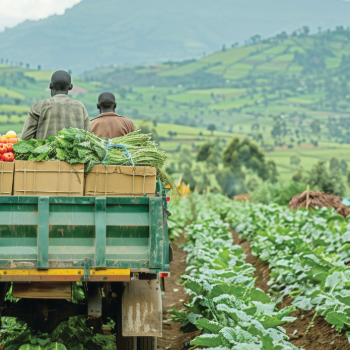
Yes, many Indian farmers have small landholdings, often divided over generations. This discourages some from continuing in agriculture. I believe farmers should have the freedom to decide how to work — independently, in groups, or in partnership with companies. It depends on the individual farmer’s choice.
CC: What are your views on farmers’ protest? Also what advice would you give to farmers who are protesting?
Farmer protests have occurred in the past and will continue in the future. The critical question is, what is the aim of the protest?
Regarding the previous three agricultural laws, the government acknowledged that there were some shortcomings. It admitted that 70% of the laws were in favour of farmers, while 30% were not, and expressed willingness to amend the legislation. The idea was to create a mutually agreeable policy. The major part of the policy addressed the concern of intermediaries who used to purchase the farmers’ produce at unfair prices and sell it to the consumers with heavy margin. So, the core issue is pricing. For instance, a farmer may receive `2,000 per quintal for wheat, but has no real negotiating power in the market. Previously, rates were inconsistent and unpredictable. Now, procurement of major crops such as soybeans, cotton, wheat and rice, are being handled at fixed prices by the government, and I support this initiative.
CC: What was the 30%, which was not in favour of the farmers?
The major flaw was that company MOUs and policies were enforced upon farmers. This led to fears that large corporations would take over farmland, resulting in widespread misconceptions. The government was open to dialogue, acknowledging that errors might have occurred on both sides —whether in policy or in understanding. A committee on MSP was formed after the bills were repealed, and its nationwide findings were expected in March, 2025. We believe it will benefit farmers.
As for ongoing protests, we too, are farmers with generations of agricultural background. A genuine farmer does not have the luxury to protest for months or years. Real change happens when farmers raise their concerns, make the government aware, and then shift their focus back to productive alternatives, like switching to more profitable crops, such as pomegranate or sugarcane.
Farmers know their land, their inputs, and the profitability of crops better than anyone else. Protests should not become the primary occupation of farmers.
CC: What can urban Indians do to show compassion for farmers?
They can promote farmers’ products. Spread awareness. Encourage them to do agro-food processing. There is great potential in items like pastes and powders of chilli, onion, garlic, spinach, coriander and others.
Farmers are largely unaware of these opportunities. Hence, agro-food processing must be decentralised. Every village should have its own processing unit. It can also be done through the support of cooperatives. This will create employment and empower farmers. I would urge the common people to buy farmer’s product, processed in Farmer Producer Organisations (FPOs) , as much as possible. These products are sent to you directly from farms without adulteration, at lower prices and having great quality. By choosing these products, consumers can directly support farmers and contribute to their well-being.
The future lies in agro-food industry because other sectors are overcrowded. And, if the farmers will adapt this sooner, they have a real chance to grow. But, if they do not adapt it, they will find themselves stuck in the same old cycle of protests, economic challenges and job struggles.